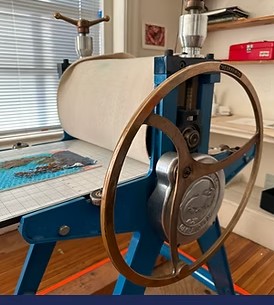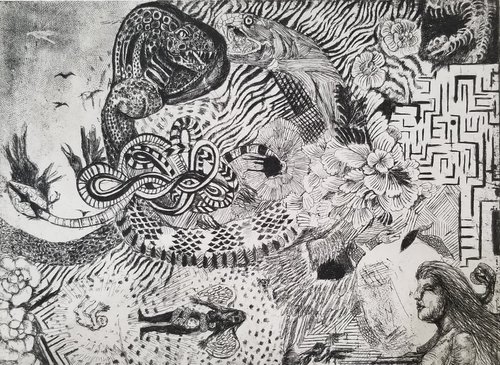In this course, students will learn about setting up a printing area and learning to print methodically by following specific procedures. The workspace and the setup of the plate are essential to being able to complete the task effectively. As such, there are specialized tools for all the processes that will be learned.

The class is divided into three major sections:Relief: Relief is the first process a lot of printmakers learn. It consists of cutting out an area from the plate. Students will also do Japanese Woodblock including Gradient printing and Hangito carving
Monotype and Collagraph: A collagraph can be inked and used as an intaglio or a relief in a more modern process. This means it has a lot of versatility. It is also created by using objects that have texture. These low-relief objects are glued to the substrate and can be used to make collagraph boards. These can be recycled materials, tissue, string, lace, and other found objects. This makes it the only printmaking process that can use found objects. Students are required to bring their textures to class to create a sample plate.
Drypoint and etching on Plexi: Students will be working on drypoint technique which is a medium that is defined by its expressive use of lines. It employs contour and cross-hatching. Intaglio is the process of printing an incised line. Lines are scraped or etched with acid. Etching needles, burnishers, and scrapers will all be used to make lines.
